



Where Will the UK Poultry Industry Be in 2020?
ANALYSIS - The Egg and Poultry Industry Conference (EPIC) offered the opportunity to take stock of the egg and meat sectors in the UK and their fitness to face the challenges in the coming years. Jackie Linden reports on the highlights of the meeting for ThePoultrySite.With record attendance, the 49th EPIC conference, held recently in South Wales, followed the theme ‘2020 Vision: safeguarding your business for the future’. In his welcome address, organising committee chairman, Stephen Lister, said that poultry has a large part to play in feeding the growing world human population. Chairman throughout the conference was managing director of Kelly Turkeys, Paul Kelly.
Breeding for the future
As far as poultry genetics are concerned, “the bird of 2020 is already in the bag,” according to Andrew Jorêt of Noble Foods, representing the British Egg Industry Council (BEIC) and conference president.

He explained that the geneticists have already selected the breeders that will be in production five years from now, so layers will be producing 550 eggs to 100 weeks with a feed conversion little over 1:1 and a 2020 broiler will achieve the same feed conversion, reaching 2kg at 19 days of age. While persistency is key for the egg flock, weight for age is the focus for the meat sector.
From the environmental impact point of view, poultry are already in a good position, particularly compared to beef and sheep, he said.
Figures from Newcastle University put Global Warming Potential (GWP; kg CO2 per kg) for standard production in broilers is 4.41 compared with 5.13 and 5.66 for free-range and organic systems, respectively. For egg production, the values are even better at 2.92, 3.38 and 3.42, respectively, he said.
While consumers currently focus more on animal welfare, Mr Jorêt believes the environmental impacts of food production will increasingly come to the fore and that poultry is in a good position from this point of view.
Animal welfare issues
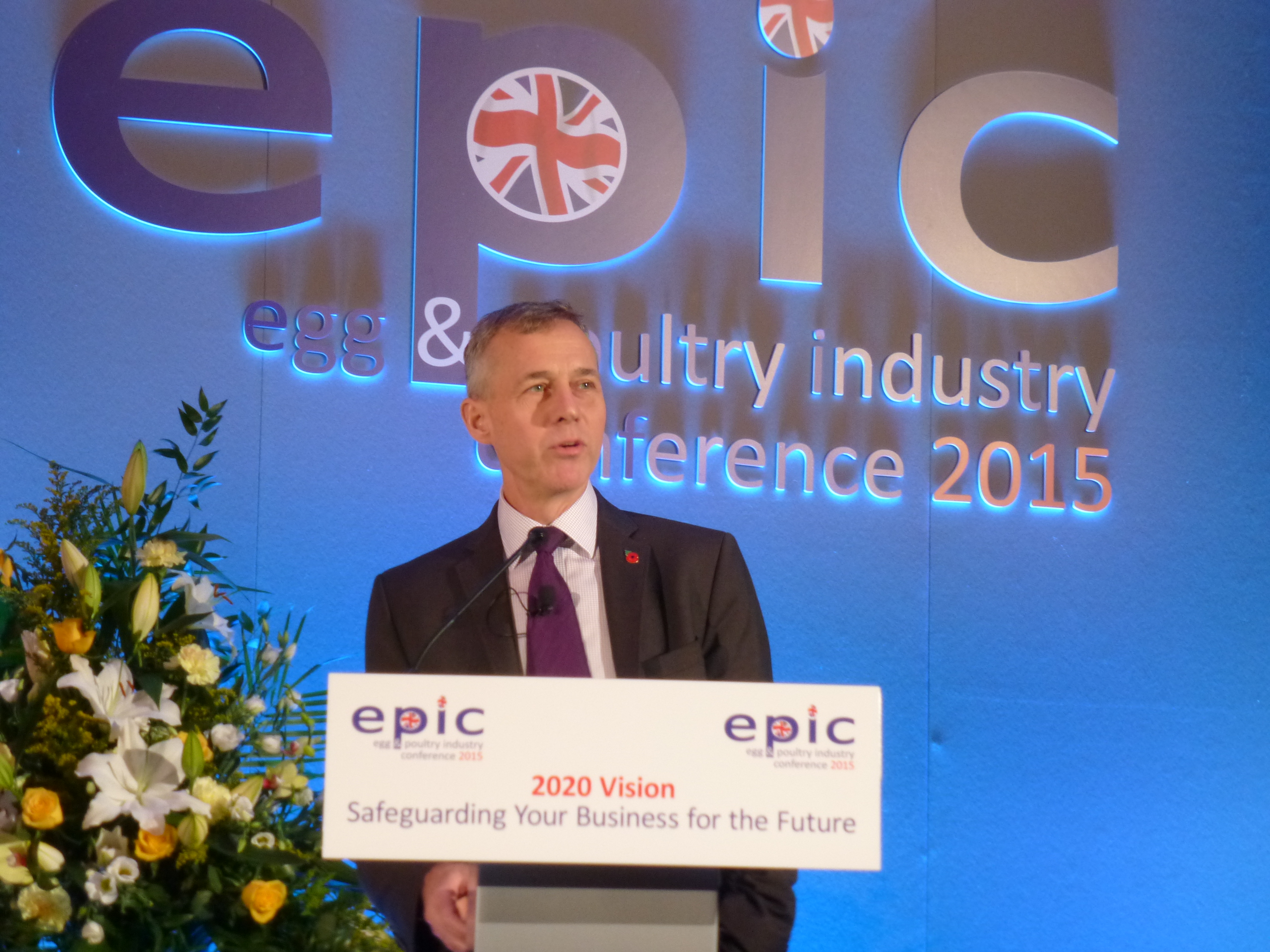
Chief Veterinary Officer, Nigel Gibbens, raised the subject of animal welfare in his wide-ranging presentation, saying that it is important for the poultry industry to remain alert to consumer expectations on welfare – and not only at home but also globally.
At the time of the conference, Secretary of State for Farming, Food & the Marine Environment, George Eustice, MP, was awaiting recommendations over the way forward on beak-trimming of laying hens, according to Mr Jorêt. He said a report from a working group, the Beak Trimming Action Group (Btag), was due to be presented to the Minister within days.
While unable to comment on the draft report, he said it is the BEIC view that is too early to put in place a ban on beak-trimming by the beginning of next year, as was originally foreseen.
The organisation agrees with the animal welfare benefits of a ban but it represents too high a risk of harm to the birds. It is the industry’s view that it is important to maintain the momentum of this issue, in terms of measures to reduce feather pecking and cannibalism which also benefit beak-trimmed flocks. The assurance schemes, Lion COP Version 7 and Freedom Foods, require producers to put in place several of these measures.
“Even if the ban does not come into force in 2016, it will return in five or 10 years’ time so it must not be ignored,” Mr Jorêt added.
Mr Eustice said that the pilot trials carried out by Defra with Bristol University showed that although stress is the main cause of injurious pecking, changes to bird management alone may not be effective in preventing it. He added that needing to use the hot-blade method as an emergency measure would be the worst option from the point of view of animal welfare.
Poultry meat safety: Campylobacter
“Campylobacter is a very complex subject – much more difficult than Salmonella was in eggs,” said Mr Jorêt.
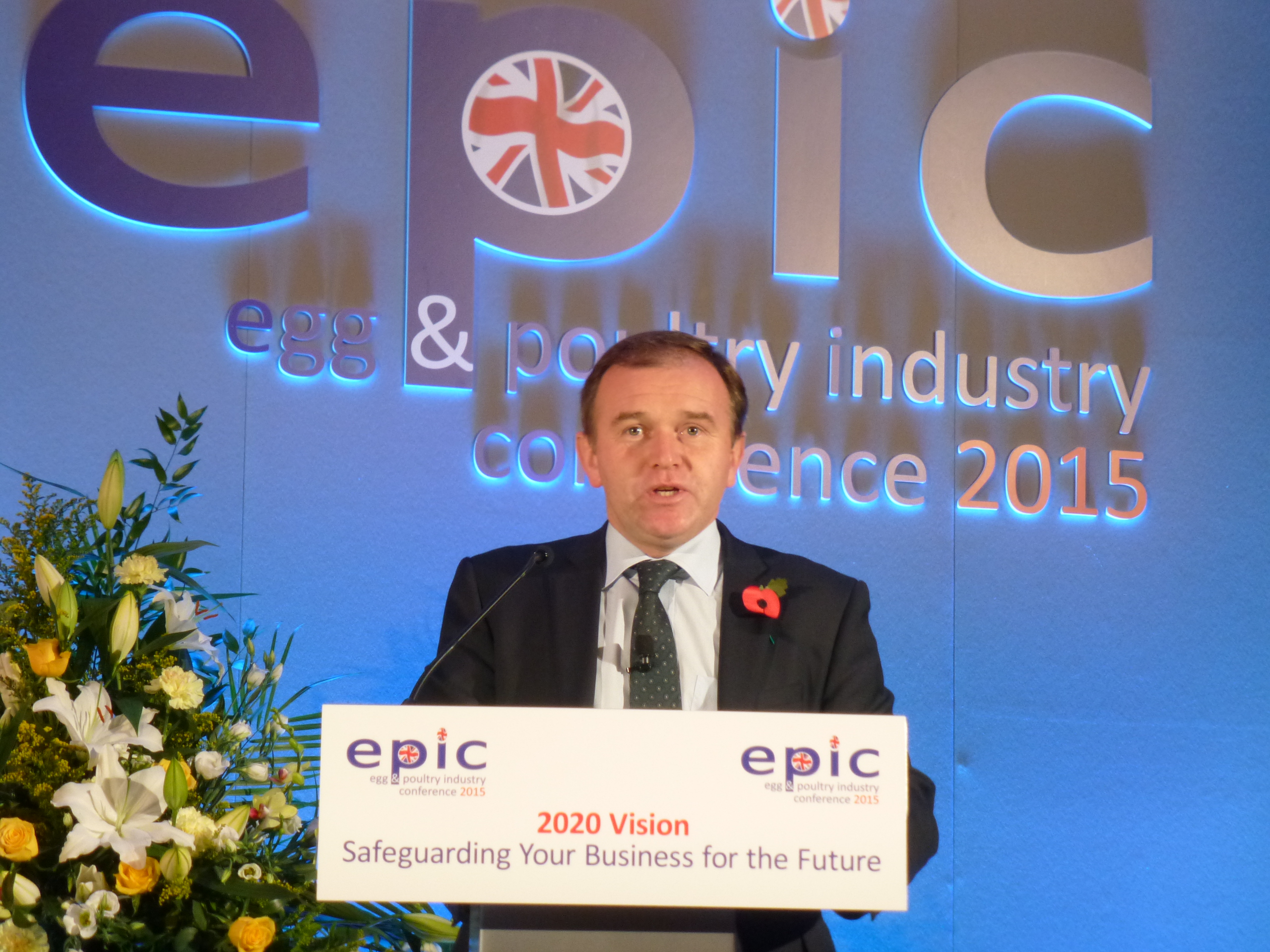
There has been some progress in Campylobacter reduction but there are still challenges ahead on how to achieve a “free from” status when it comes to Campylobacter, he said, not least in terms of the cost. Ideally, these bacteria would be eliminated during live production but to ban thinning, for example – a known risk factor – would have an enormous price tag. It might require a whole range of measures to be put in place to tackle this issue.
The Minister said that the poultry industry is addressing the Campylobacter issue through changes to thinning and treatments at the slaughterhouse such as blast chilling but, he said, “we’re not there yet and as there is no single solution to the problem but we will need to apply more than one tool in the box to beat this disease”.
Mr Gibbens identified a number of measures that can contribute to a reduction in Campylobacter, including improved biosecurity, no thinning of flocks (or managed depopulation), additives in the feed or drinking water, incentive schemes for farmers producing Campylobacter-free flocks, better training of catching crews and in-house and third-party audits.
Antibiotic resistance testing
According to Mr Gibbens, the poultry meat sector was the first in the country to supply information on antibiotic use to the national authority, the Veterinary Medicines Directorate (VMD).
According to the most recent data, there is good news on Salmonella, for which the number of susceptible strains in layers, broilers and turkeys is increasing year-on-year and no resistance to 3rd generation cephalosporins has been measured in chickens. For Campylobacter, isolates from broilers and turkeys showed no resistance to macrolide antibiotics although resistance to the fluoroquinolone, ciprofloxacin, was common.
Looking after the industry’s greatest asset: people
“People are our greatest asset but do we invest sufficient time and money to get the best? And does it matter?” asked John Reed, Agricultural Director of Cargill Meats Europe and Chairman of the British Poultry Council. He went on to explore how to attract, recruit, train and retain quality people in the industry.
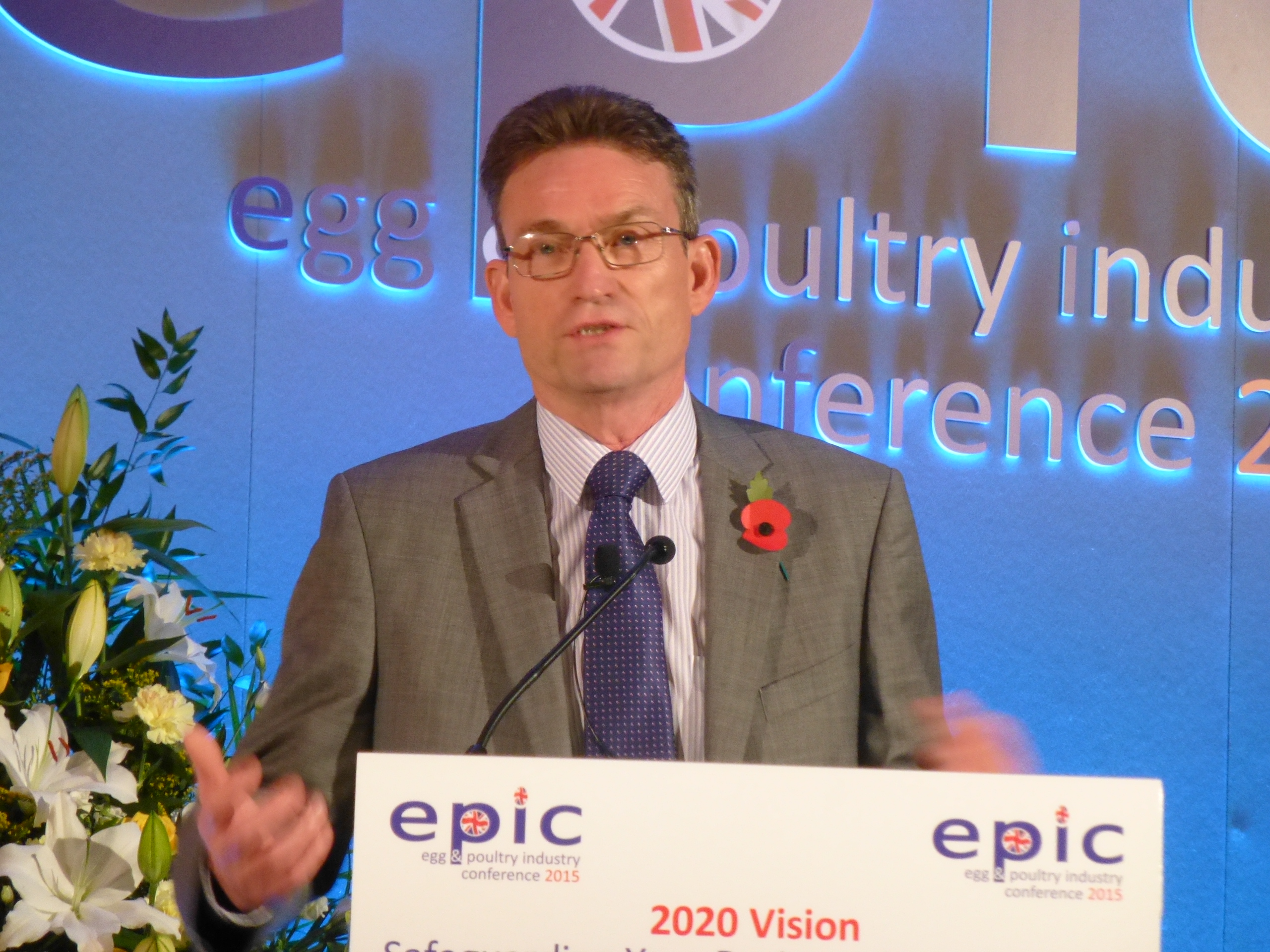
A Schools Program and Open Farm Sunday have achieved some success in terms of providing information about the industry, although few poultry farms have been able to open up to the public due to disease risks. Bright Crop has helped to inspire young talent to explore the wide choice of careers in farming and food supply and the industry is re-engaging with colleges and universities to attract new entrants.
Once in the industry, British Poultry Training offers training and diplomas at three different levels, said Mr Reed, and schemes such as the Nuffield Farming Scholarship, NFU Poultry Industry Programme and Tesco’s Future Farming Foundation help to develop talented people, he said. What is needed now are ways to retain high-calibre people within the poultry sector.
“We’ve made a good start,” Mr Reed concluded. “Let’s be more open, attract new talent and we’ll have a successful future.”
Poultry: sustainable business for 2020
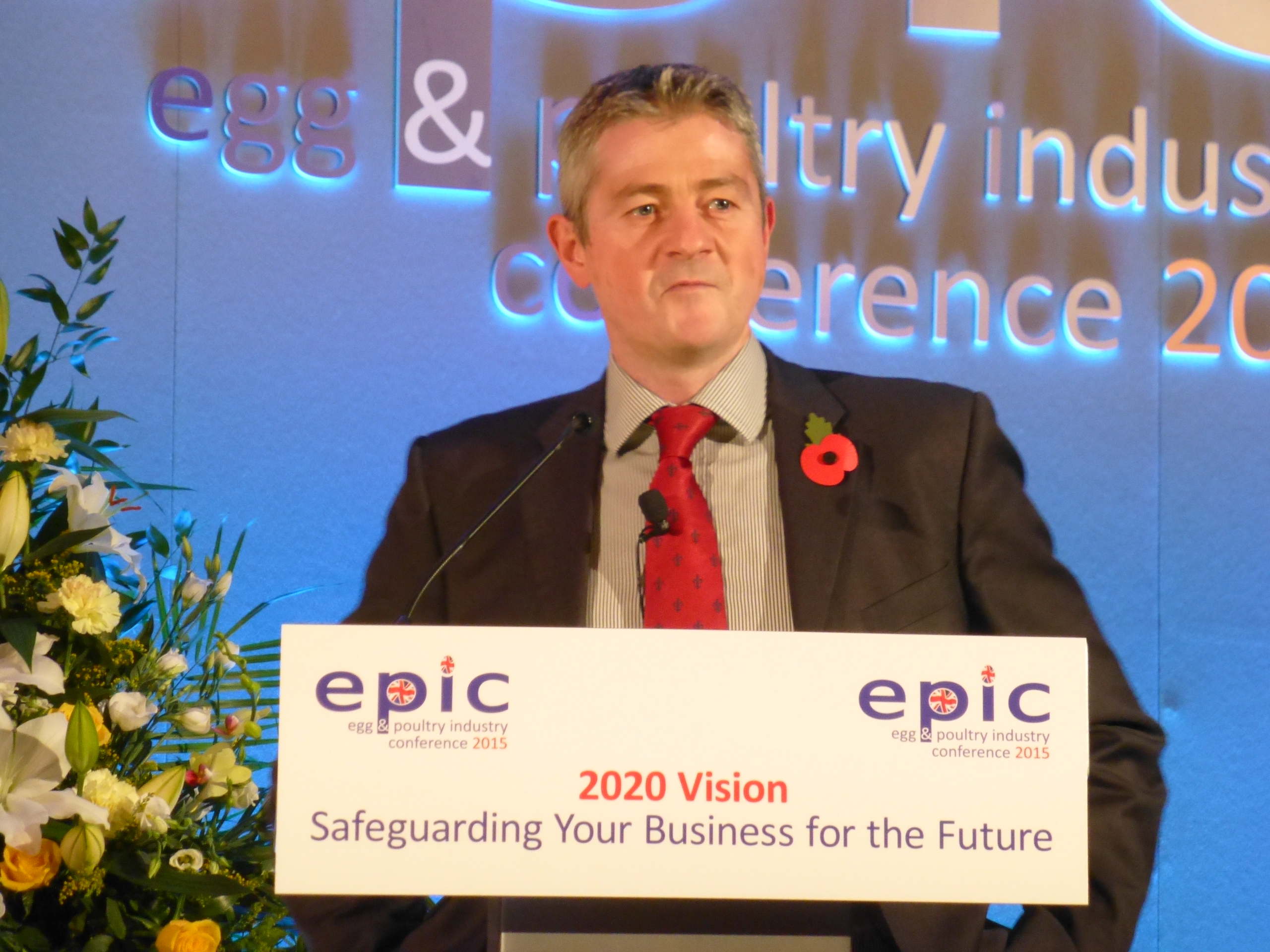
Changes in food and commodity prices since 2008 are unlikely to be repeated in the next five years, according to Sion Roberts, senior partner in the European Food and Farming Partnership (EFFP). In that year, three factors drove up food prices: rises in the price of oil and commodities and a devaluation in the UK currency, sterling.
In the last 18 months, these drivers have reversed and food prices have fallen, aided by the arrival in the UK and growth of European discounters, Aldi and Lidl. However, Mr Roberts expects that food price deflation will likely end by mid-2016 and there will be a return to gradual inflation again. Key risks include a sudden economic crisis or extreme weather event, he warned.
Looking ahead, the poultry industry is in a good position as demand is strong and the integrated chains help to manage risks and there are opportunities for hedging.
Mr Roberts advised the poultry sector to focus on productivity, securing supplies and managing risks as far as possible. It will be important to remain in touch with consumers and sustainability could return to the business agenda.
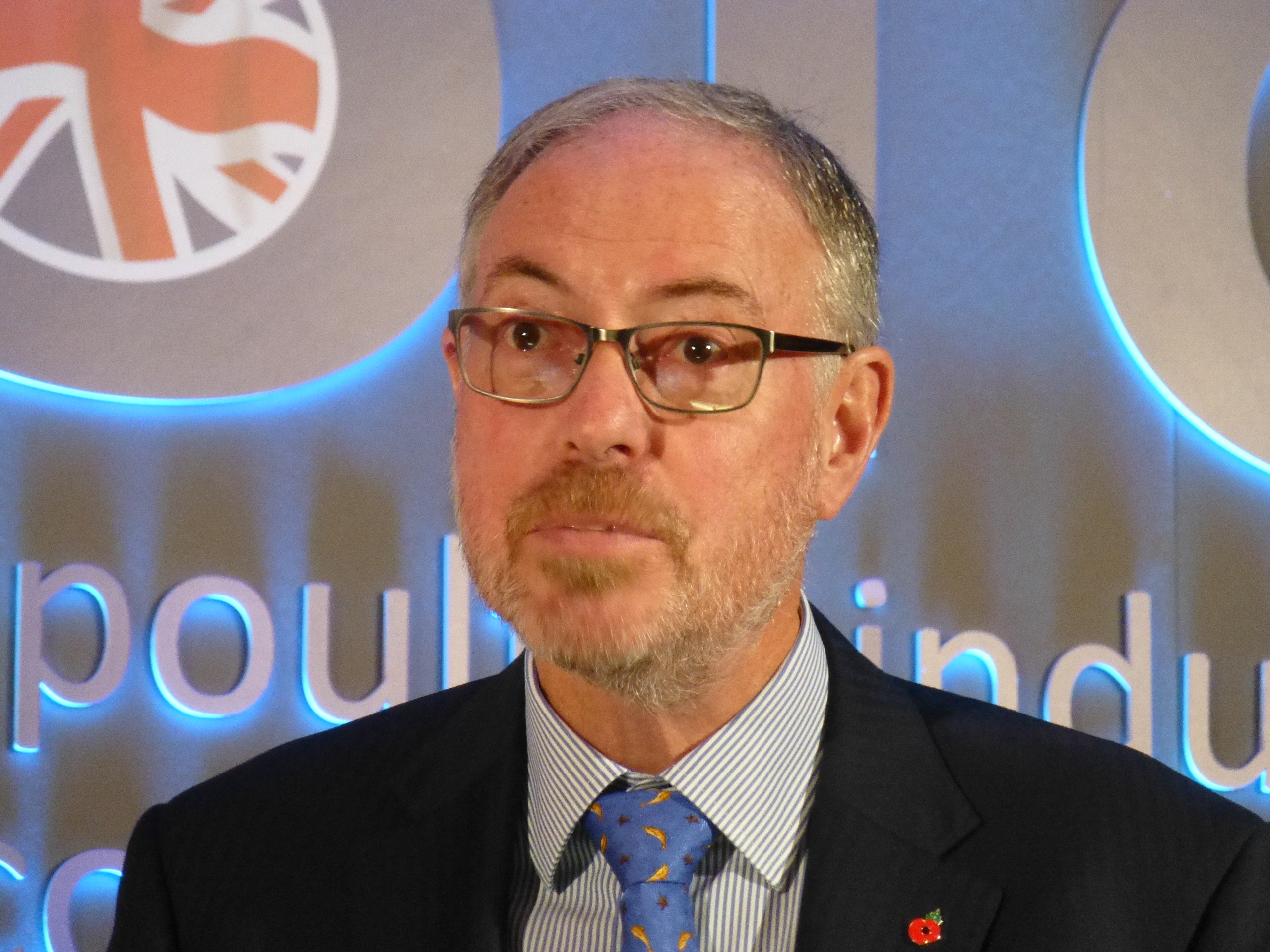
Director of Orca Associates, Dr Roger Palmer, offered tips on business sustainability. He recommended keeping the business simple and doing it really well by controlling quality, service and costs.
He stressed that it is vital to understand the customer needs, and so it is vital to establish a platform for dialogue, and to be able to solve any problems.

James Walton, chief economist with food supply organisation, IGD, agreed that the outlook for growth in the UK grocery sector is muted but there will be growth from a combination of food price inflation, population growth and trading-up in food purchasing. This growth will be enjoyed mainly by convenience stores and discounters at the expense of the big supermarkets and hypermarkets as consumers shop more often, more locally and more on-line.
With a government policy on tackling obesity due to be announced shortly, consumers are likely to opt for healthy options but these dishes will also need to be more satisfying, he said.
As they realise that a relentless focus on price and promotions leads to volatility, “collaboration in the food chain and innovative technology will be the key to success in the coming years”, concluded Mr Walton.
Tom Willings, Agricultural Director of Noble Foods, offered a similar message, saying that one of the major risks in business is complacency. “Keep moving forward and keep innovating,” he told the audience at EPIC. In his view of the market in 2020, he sees potential to build on the momentum of consumption growth and while price will remain critical for some consumers, it need not be a barrier to growth.
.JPG)
“Diet consciousness is our big opportunity, in terms of a good protein source, options for convenience and mass appeal,” he added.
In a typically lively final presentation at EPIC 2015, Justin Urquart-Stewart, market commentator and co-founder of Seven Investment Management shared his views on the directions of the world’s major economies.
He showed how the big global economies – the US, EU and Russia – as well as the UK – have been changing since the millennium, but these have been broadly positive in recent years and what businesses need is to adapt with confidence to the evolving conditions.
Reviewing the prospects for the UK poultry sector in the medium term, Mr Jorêt said the situation looks good. Current consumer trends for protein consumption and fitness are good for the poultry meat and egg sectors, as shown by rising per-capita consumption figures, and there are also positive stories to tell on the industry’s green credentials.
“This is a progressive and innovative industry, and perhaps because it receives no state support, it is closer to consumers than any other sectors,” he added.
The Minister, Mr Eustice commented that the poultry sector is competitive and efficient, that is has a good reputation internationally and that it has a strong future.








